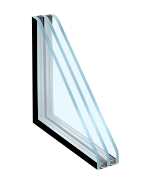 ×
×

What is “STC”? Glass & Glazing contractors have become more versed with this metric as it relates to their product offerings as open floor plans incorporating glass become more prevalent:
“STC” stands for Sound Transmission Class
STC ratings are a way to measure and compare how much sound is stopped / absorbed by any given product / material. STC ratings are used for windows, wall assemblies, doors and some constituent materials.
The STC rating is the average amount of noise stopped at 18 different frequencies, measured in decibels. STC ratings are a logarithmic scale similar to the earthquake Richter Scale, which means each escalating number is significantly higher in performance than the previous number. It is a non-linear scale.
One US glass manufacturer who has published STC ratings for their various product types are the high-performance glass experts at Viracon.
Viracon Acoustical Glass is made from combinations of various glass types along with acoustical window frames to help you effectively reduce sound transmission from airplanes, trains, vehicles and other unwanted noises. The performance data below applies to an insulating unit. Data is based on testing ~36″ x 84″ glass to ASTM E413-87 in an acoustical wall. Glass size and glazing system will affect STC rating. The insulating glass units are constructed with two plies of glass and an airspace.
The STC (Sound Transmission Class) rating is a single-number rating system for interior building partitions and viewing windows used to categorize acoustic performance.
The OITC (Outside-Inside Transmission Class) rating is used to classify acoustic performance of glazing in exterior applications.
INSULATED GLASS ACOUSTIC PERFORMANCE DATA TABLES – DOWNLOAD
– courtesy of Viracon